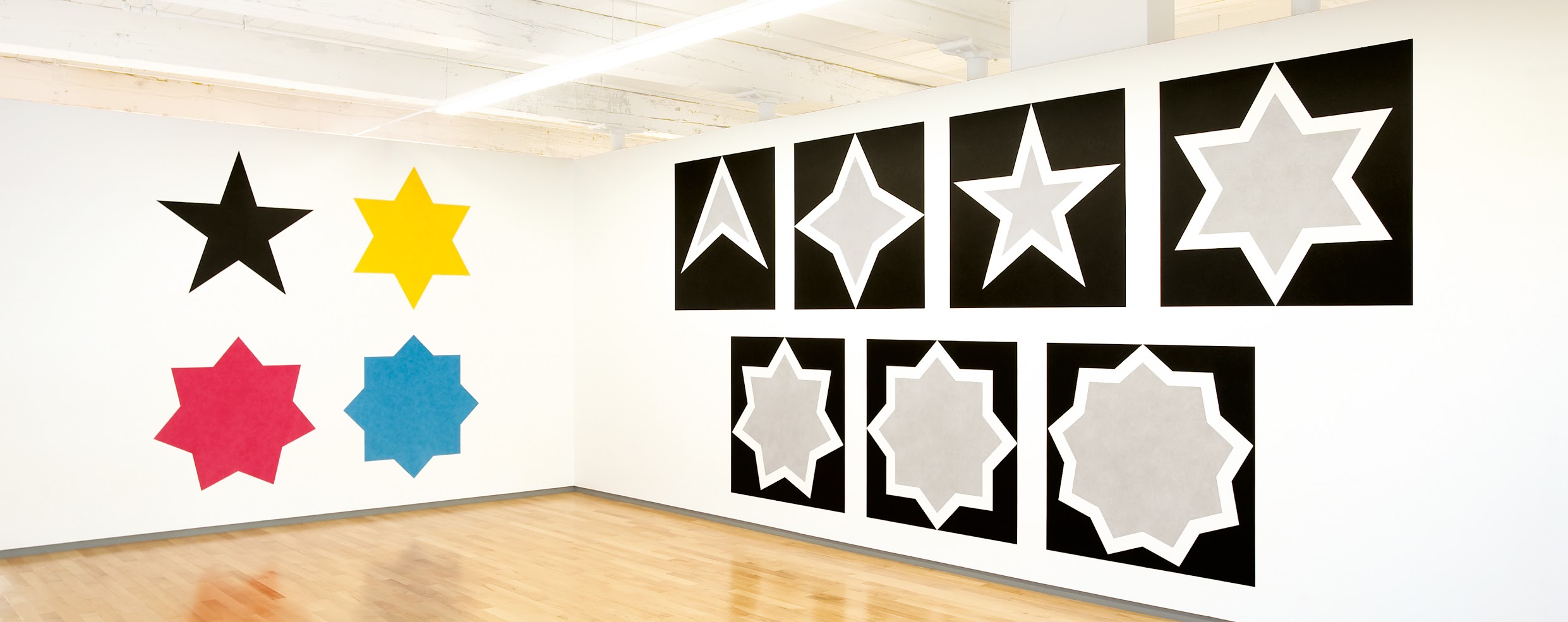Sol LeWitt
- Sol LeWitt
A black five-pointed star, a yellow six-pointed star, a red seven-pointed star, and a blue eight-pointed star, drawn in color and India ink washes.
May 1983
India ink wash and color ink wash
LeWitt Collection, Chester, Connecticut
First Installation
Accademia de Belle Arti, Perugia
First Drawn By
Oriano Baldelli, Alain Bolzan, Luca Constantini, Eduard Winklhofer
MASS MoCA Building 7
Second Floor
Geometric shapes began to appear in outline in Sol LeWitt’s wall drawings as early as 1975, but it was not until the 1980s that the artist began to draw solid geometric shapes, such as the stars in Wall Drawing 396. The stars are executed in ink, a medium that LeWitt had recently adopted. Shapes executed in ink were much bolder and more saturated than those drawn in crayon, the medium that LeWitt had previously used.
This drawing, an example of LeWitt’s early experimentation with the star shape, consists of a series of stars, each with one more point than the last. The artist defines stars by the geometry of the circle; each point of a star touches the circumference of a circle. Within the circle the draftsmen construct the star using geometric formulae. The heptagon, or seven-sided, shape in Wall Drawing 396 is problematic for the draftsmen in that it is composed of all irrational angles. These angles are difficult to construct with a ruler and compass — which LeWitt’s draftsmen usually use — because of the approximation that they necessitate.


